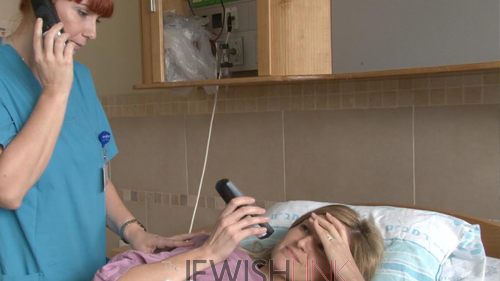Imagine being a new immigrant in Israel and needing to go through a major surgery at the local hospital. You might need to rely on a family member to translate for you, or hope that you somehow can get the message across. But now, at Rambam Health Care Campus in Haifa, the barriers to living in Israel as an immigrant just got diminished.
Thanks to a newly activated simultaneous translation device, patients at Rambam can request to use a phone-like tool that translates conversations with medical staff in real time. The tool connects to a trained medical interpreting staff working around the clock at the Ministry of Health.
The patient speaks to an operator, who translates what the patient is saying to the doctor, and translates back to the physician – as if the translator was in the patient room and conversing normally with the patient and medical staff. All conversations are recorded and saved as part of the patient’s medical records.
This translation services are available 24 hours each day, except on Shabbat. Arabic, Russian and Amharic speakers can use the program at no cost. In the first week that the system was operational, there were 84 Russian calls, 22 in Amharic and 3 in Arabic, according to the Health Ministry. Most of the calls were made by elderly patients.
Because Israel is a melting pot of cultures, physicians at Rambam are skilled at addressing health care issues across diverse populations. Language fluency is a particular challenge, especially with the large number of immigrants in Israel from various countries. According to government statistics, about 15% of Israel’s population speaks and understand Hebrew at an intermediate level and less than 7.2% of the population has a weak or minimal grasp of the language. Thus, lack of language proficiency can cause many immigrants to forgo medical care.
“It is important that the communication between the patient and the medical practitioner will take place continuously and that the language be understood by both parties, in order that the patient gets the best and right treatment,” said Kobi Shir Moskowitz, the project’s coordinator, “With this service, we come today to a population that was previously only reached through casual interpreters, which were not always available immediately. Now, when you can talk to the patient in his own language and they can express themselves freely, we see the differences and the meaning for all parties.”
